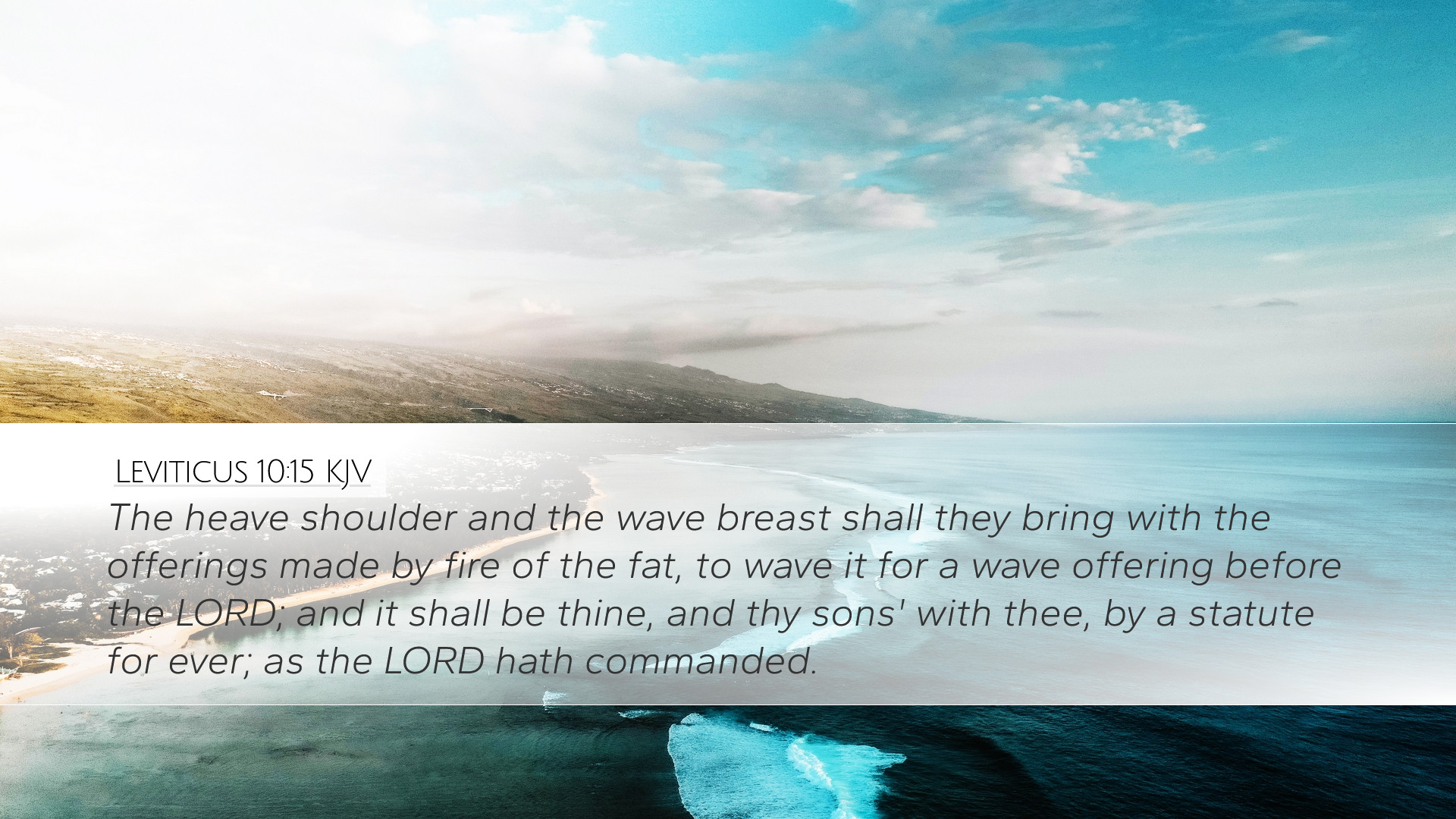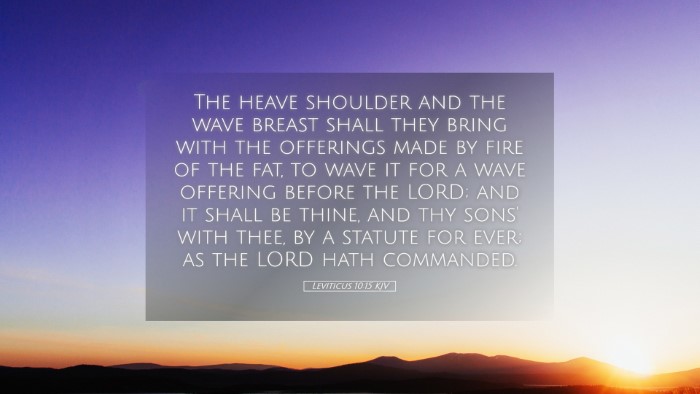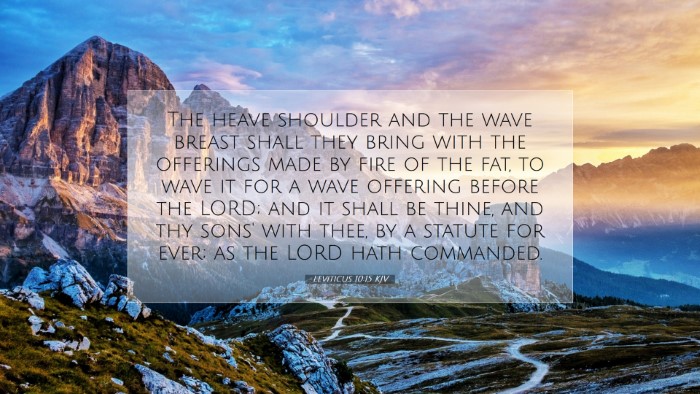Commentary on Leviticus 10:15
Bible Verse: "The shoulder of the ram of the consecration, and the wave breast shall they bring in the presence of the Lord, and it shall be thine, and thy sons with thee, by a statute for ever; for it is a wave offering: and it shall be a wave offering from the children of Israel of the sacrifice of their peace offerings."
Introduction
This verse is part of a larger narrative concerning the consecration of Aaron and his sons to the priesthood. The context is critical to understanding the significance of the offerings being described. In this commentary, insights from venerable theologians like Matthew Henry, Albert Barnes, and Adam Clarke will illuminate the meaning and implications of Leviticus 10:15.
Summary and Analysis
The Nature of Offerings
Leviticus 10:15 describes specific offerings that were a part of the priestly consecration process. Matthew Henry emphasizes the importance of offerings as acts of devotion and recognition of God’s holiness. He notes that the shoulder and wave breast are significant portions representing strength and sustenance, symbolizing that God provides for His people through the ministry of His priests.
Significance of the Wave Offering
Adam Clarke provides insight into the cultural and ritualistic aspects of the wave offering. He explains that the act of “waving” the offering before the Lord served not only as a means of dedicating the gift to God but also as a demonstration of the giver’s gratitude and acknowledgment of God’s provision. The wave offering was a ritualistic act that reflected the relationship between the worshipper and God.
The Portion for the Priests
In the latter part of the verse, the text states, "it shall be thine, and thy sons with thee." Albert Barnes interprets this as a divine enactment where God ensures that the priests are sustained through the offerings of the people. This established system reinforced the need for a designated priesthood and showcased the covenant relationship between God and His people. The priest and their families were to partake in these offerings as a means of their livelihood, establishing their holy service.
The Eternal Statute
The phrase "by a statute for ever" highlights the permanence and divine authority of this command. Matthew Henry points out that this reflects God’s plan for Israel's worship and the continuity of the priestly line. It underscores the idea that these practices were not merely for a moment but were instilled as enduring instructions for future generations, which carefully aligned with the holiness required in worshiping a just and holy God.
Theological Implications
This verse has several theological implications, especially concerning the role of the priesthood and sacrificial practices in the Old Testament:
- Priestly Mediation: The offerings signify the mediation between God and His people. The priest’s role was crucial, serving as a channel through which the Israelites could approach God.
- Holy Covenant: The permanence of the statutes indicates a committed relationship between the Lord and His people, highlighting that worship requires structure and devotion.
- God's Provision: The provisions made for the priests underscore God’s care for His servants, ensuring they were supported through the tributes from the people of Israel.
- Symbolism of the Offerings: The offerings represent deeper spiritual truths about obedience, service, and consecration to God.
Application for Today
While these practices and rituals may seem distant from modern worship, there are several applications that pastors, students, and theologians can draw from Leviticus 10:15:
- Understanding Sacred Service: The importance of reverence and commitment in serving God in any ministerial role cannot be overstated. This verse reminds individuals in ministry about their responsibilities and the sacredness of their calling.
- Devotion in Worship: The nature of offerings encourages contemporary believers to consider what they 'offer' in their worship—be it time, talents, or resources. Worship is holistic and should reflect commitment to God.
- Gratitude and Acknowledgment: Just as the wave offering symbolized gratitude, today’s followers should constantly acknowledge God's provision and blessings in their lives through acts of service and thanksgiving.
- Community Support: The support provided to priests in the Old Testament serves as a principle for how congregations should support their church leaders, creating a cohesive worshiping community focused on God’s mission.
Conclusion
Leviticus 10:15 encapsulates a vital part of the Israelite sacrificial system that was intricately designed to maintain a holy relationship between God and His chosen people. Through the insights of Henry, Clarke, and Barnes, we glean rich theological insights and practical applications that continue to resonate in our contemporary context of worship and ministry. As believers, understanding these elements of sacred service encourages a deeper and more reverent approach to God as we engage in worship and community life.


